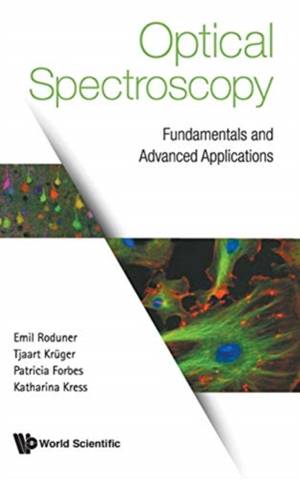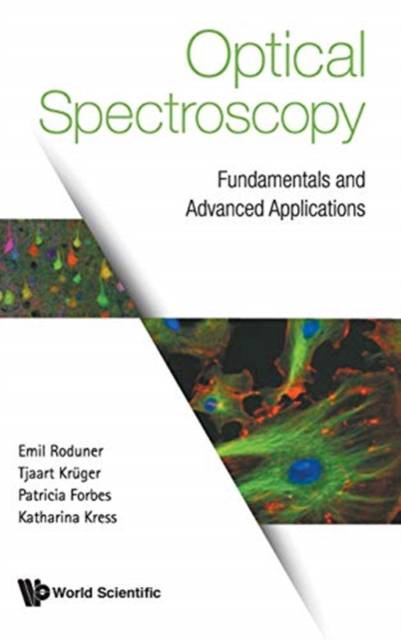
- Afhalen na 1 uur in een winkel met voorraad
- Gratis thuislevering in België vanaf € 30
- Ruim aanbod met 7 miljoen producten
- Afhalen na 1 uur in een winkel met voorraad
- Gratis thuislevering in België vanaf € 30
- Ruim aanbod met 7 miljoen producten
Zoeken
Optical Spectroscopy: Fundamentals and Advanced Applications
Emil Roduner, Tjaart Kruger, Patricia Forbes, Katharina Kress
Hardcover | Engels
€ 149,95
+ 299 punten
Omschrijving
Developments in optical spectroscopy have taken new directions in recent decades, with the focus shifting from understanding small gas phase molecules towards applications in materials and biological systems. This is due to significant interest in these topics, which has been facilitated by significant technological developments.Absorption, luminescence and excited state energy transfer properties have become of crucial importance on a large scale in materials related to light-harvesting in organic and inorganic third generation solar cells, for solar water splitting, and in light emitting diodes, TV screens and many other applications. In addition, Förster resonance energy transfer can be used as a ruler for the characterisation of the structure and dynamics of DNA, proteins and other biomolecules via labelling with fluorescing markers.This advanced textbook covers a range of these applications as well as the basics of absorption, emission and energy transfer of molecular systems in the condensed phase, in addition to the corresponding behaviour of metal nanoparticles and semiconductor quantum dots. Technical experimental requirements, aspects to avoid interfering perturbations and methods of quantitative data analysis make this book accessible and ideal for students and researchers in physical chemistry, biophysics and nanomaterials.
Specificaties
Betrokkenen
- Auteur(s):
- Uitgeverij:
Inhoud
- Aantal bladzijden:
- 268
- Taal:
- Engels
Eigenschappen
- Productcode (EAN):
- 9781786346100
- Verschijningsdatum:
- 10/01/2019
- Uitvoering:
- Hardcover
- Formaat:
- Genaaid
- Afmetingen:
- 152 mm x 229 mm
- Gewicht:
- 526 g

Alleen bij Standaard Boekhandel
+ 299 punten op je klantenkaart van Standaard Boekhandel
Beoordelingen
We publiceren alleen reviews die voldoen aan de voorwaarden voor reviews. Bekijk onze voorwaarden voor reviews.








